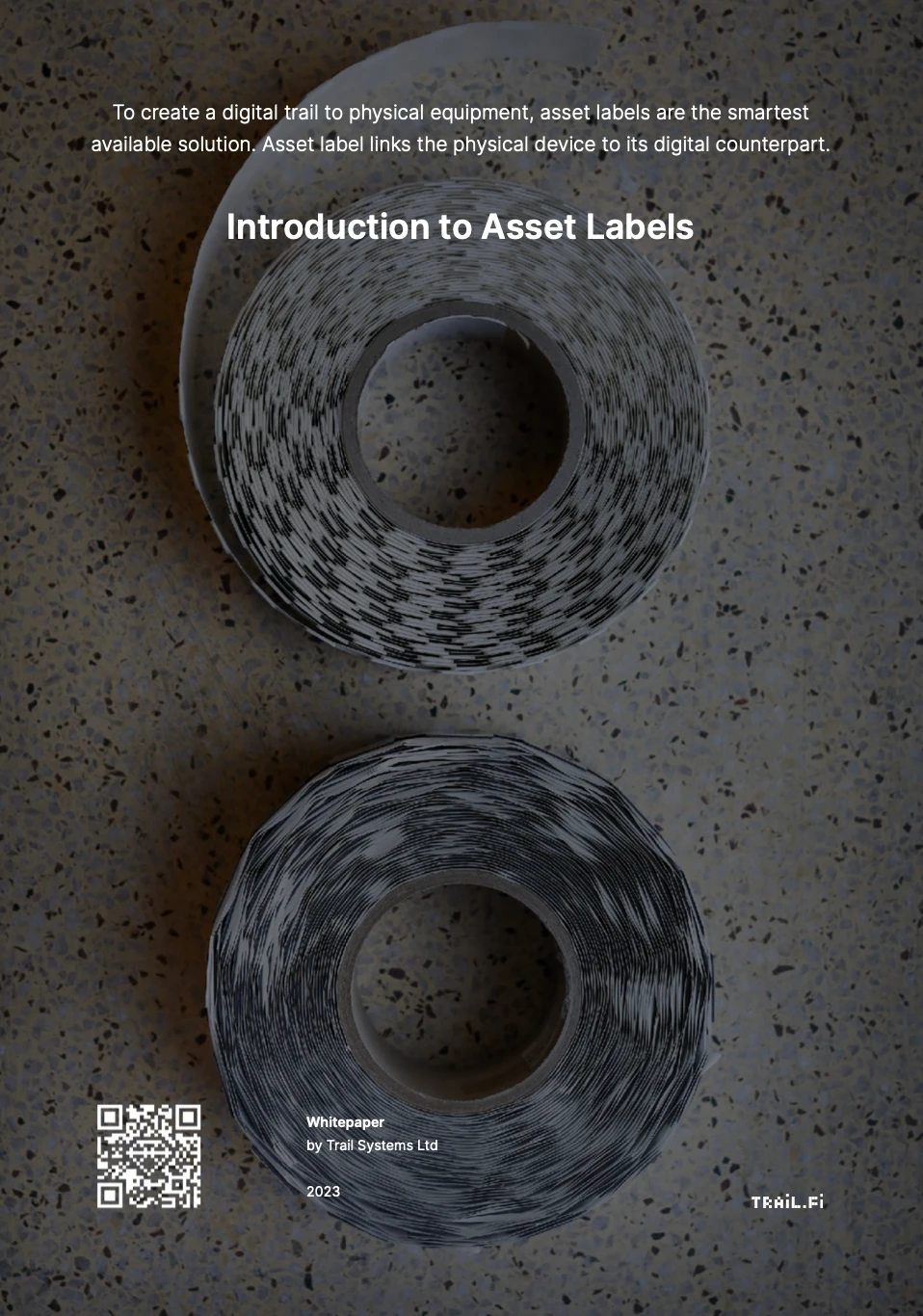
Asset labels for fast information access
Labelling equipment with RFID, NFC, QR codes, or barcodes streamlines all processes of updating equipment information. These labels facilitate real-time updates of equipment information during inspections, maintenance, and transfers ensuring data quality and timeliness. Practically, this involves attaching a physical label to each item, which is linked to its digital counterpart in Trail. Users can then scan the label during operations to view or update the item's information in the system.
Key benefits
Effortless update of asset information during any operations
Equipment inventory efficiency
Streamlined processes that allow smooth information update
Visible indication of asset ownership and tracking of the physical asset
Trail asset register provides up-to-date information through a comprehensive inventory of labelled equipment. The inventory list relies on various labeling technologies, including QR codes, barcodes, RFID tags, and NFC tags. Each label corresponds to a digital item card in the system, where all equipment information is stored.

Labelling technology requirements may vary depending on the type of equipment and its usage conditions. As a result, the choice of technology is made on a case-by-case basis according to specific needs.
During operations, equipment labels can be scanned using the Trail mobile app or a separate reader device. After scanning, users can view information on the item card and record operational details, such as defect reports or maintenance needs. Trail's mobile app allows for real-time updates during equipment inspections.
One of the main benefits of labelled equipment is improved inventory efficiency. Scanning all labels in a given area enables Trail to register all identified assets quickly. RFID labelling technology offers particularly significant efficiency gains, as RFID tags can be read from up to 10 meters away, greatly enhancing inventory processes.



